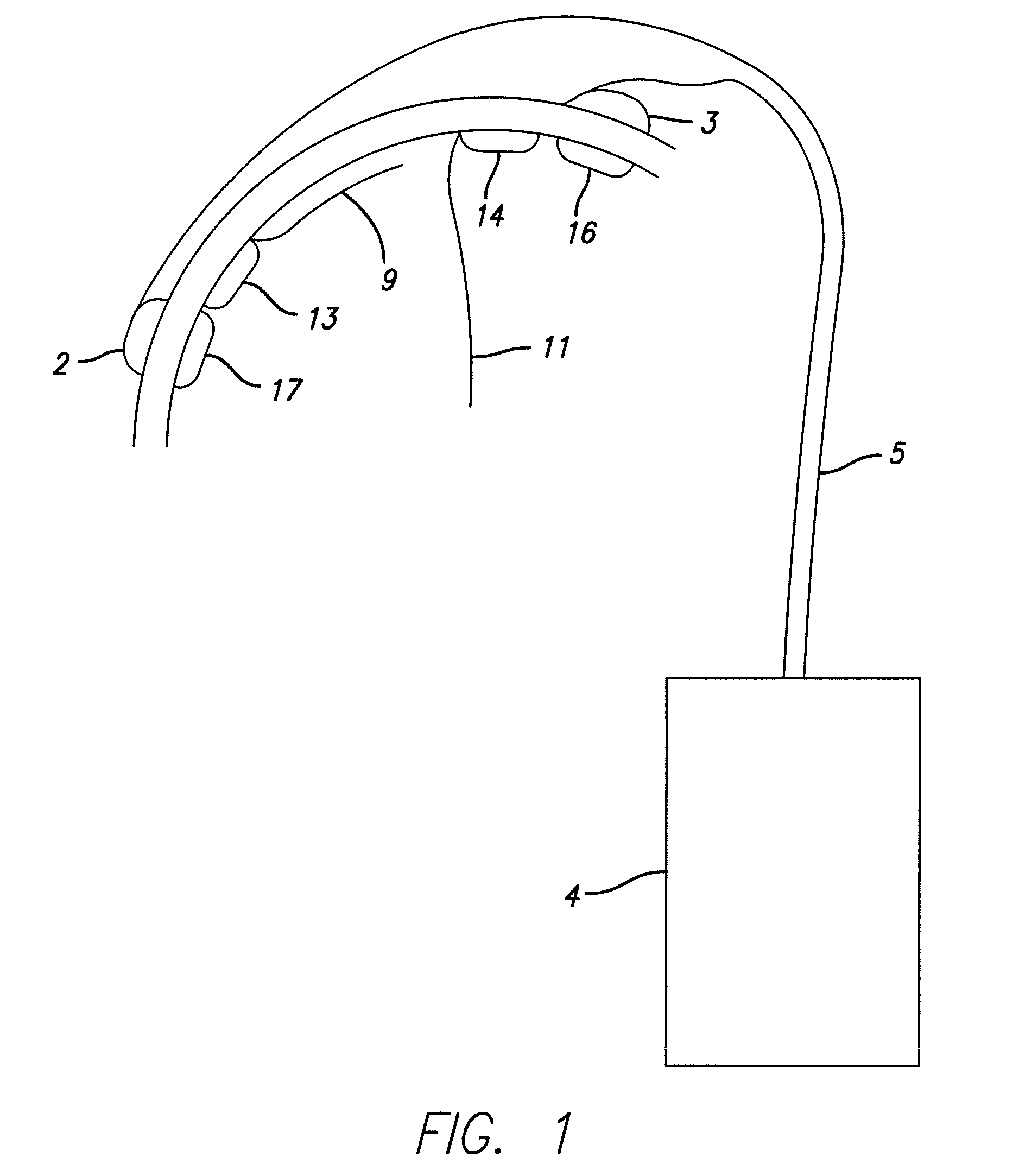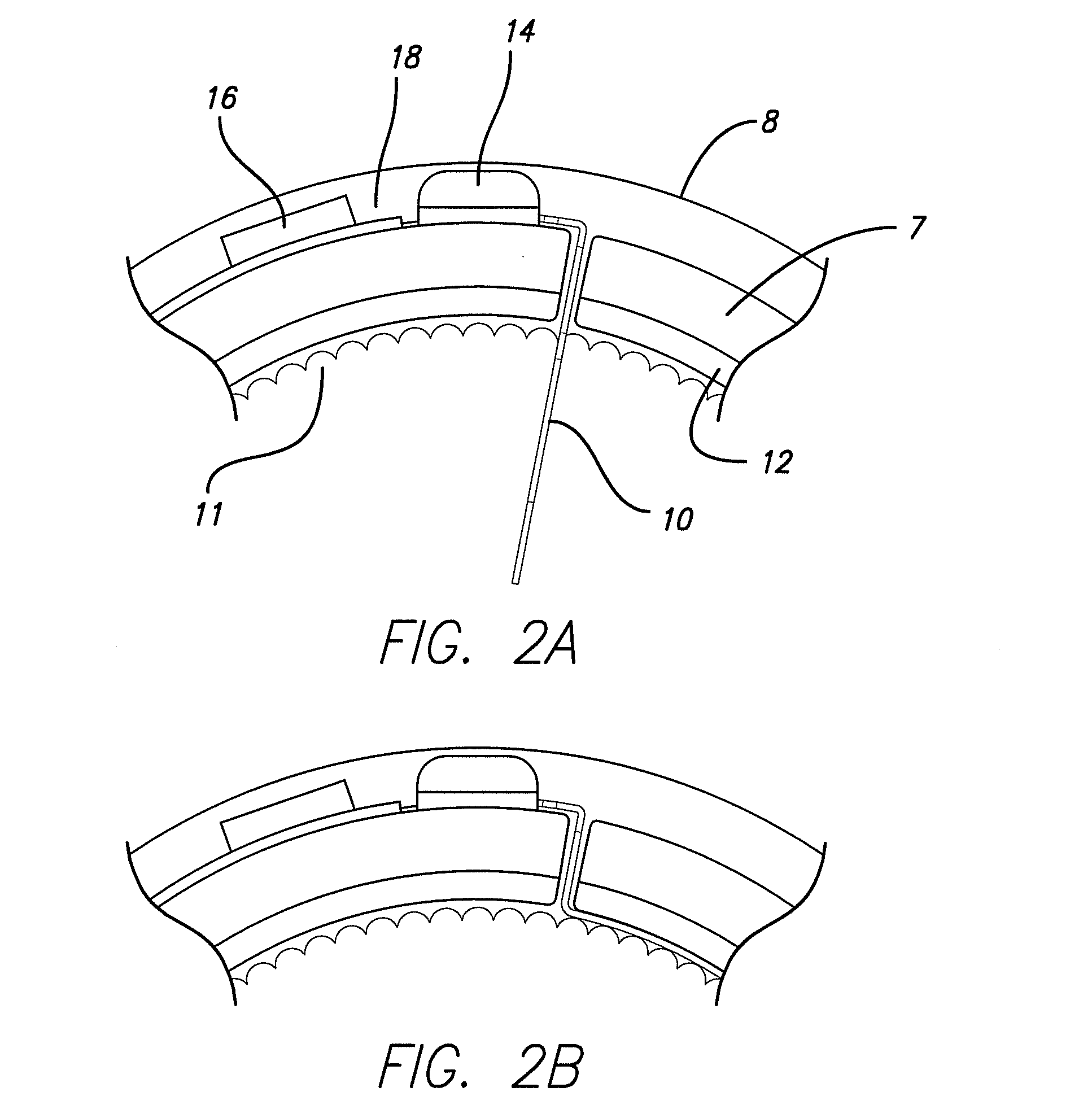Cortical Implant System for Brain Stimulation and Recording
a cortical implant and brain stimulation technology, applied in the field of implantable devices, can solve the problems of inability to guarantee the performance of the implanted electrode, the inability to perform the implanted electrode in time, and the inability to meet the needs of users, so as to achieve the effect of less signal distortion and short electrode array
- Summary
- Abstract
- Description
- Claims
- Application Information
AI Technical Summary
Benefits of technology
Problems solved by technology
Method used
Image
Examples
Embodiment Construction
[0137]The following description is of the best mode presently contemplated for carrying out the invention. This description is not to be taken in a limiting sense, but is made merely for the purpose of describing the general principles of the invention. The scope of the invention should be determined with reference to the claims.
[0138]The preferred device is a closed loop system that measures neural activity calculates stimulation signals according to the measured neural activity and stimulates accordingly. In the preferred embodiment, the implantable portion measures ECoG and LFP signals. In one example the system measures neural activity from the mPFC and stimulates the basolateral nucleus of the amygdale.
[0139]An alternative device provides for selectable sensing electrodes. That is, any electrode, or electrodes, within the array may be connected to any recording channel or any stimulation driver to adapt the device for most effective recording of neural activity. All programmabl...
PUM
 Login to View More
Login to View More Abstract
Description
Claims
Application Information
 Login to View More
Login to View More - R&D
- Intellectual Property
- Life Sciences
- Materials
- Tech Scout
- Unparalleled Data Quality
- Higher Quality Content
- 60% Fewer Hallucinations
Browse by: Latest US Patents, China's latest patents, Technical Efficacy Thesaurus, Application Domain, Technology Topic, Popular Technical Reports.
© 2025 PatSnap. All rights reserved.Legal|Privacy policy|Modern Slavery Act Transparency Statement|Sitemap|About US| Contact US: help@patsnap.com



